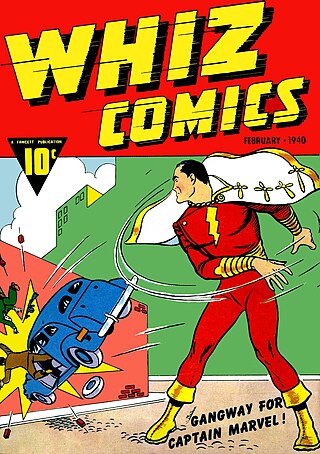
A superhero or superheroine is a stock character who typically possesses superpowers or abilities beyond those of ordinary people, is frequently costumed concealing their identity, and fits the role of the hero; typically using their powers to help the world become a better place, or dedicating themselves to protecting the public and fighting crime. Superhero fiction is the genre of fiction that is centered on such characters, especially, since the 1930s, in American comic books, as well as in Japanese media.
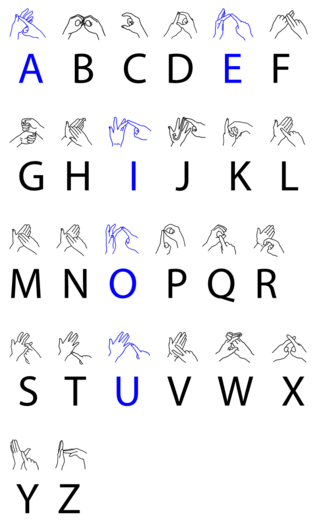
British Sign Language (BSL) is a sign language used in the United Kingdom and is the first or preferred language among the deaf community in the UK. While private correspondence from William Stokoe hinted at a formal name for the language in 1960, the first usage of the term "British Sign Language" in an academic publication was likely by Aaron Cicourel. Based on the percentage of people who reported 'using British Sign Language at home' on the 2011 Scottish Census, the British Deaf Association estimates there are 151,000 BSL users in the UK, of whom 87,000 are Deaf. By contrast, in the 2011 England and Wales Census 15,000 people living in England and Wales reported themselves using BSL as their main language. People who are not deaf may also use BSL, as hearing relatives of deaf people, sign language interpreters or as a result of other contact with the British Deaf community. The language makes use of space and involves movement of the hands, body, face and head.

Alberto Sordi was an Italian actor, comedian, director, singer, and screenwriter.

Deaf culture is the set of social beliefs, behaviors, art, literary traditions, history, values, and shared institutions of communities that are influenced by deafness and which use sign languages as the main means of communication. When used as a cultural label, especially within the culture, the word deaf is often written with a capital D and referred to as "big D Deaf" in speech and sign. When used as a label for the audiological condition, it is written with a lower case d. Carl G. Croneberg coined the term "Deaf Culture" and he was the first to discuss analogies between Deaf and hearing cultures in his appendices C/D of the 1965 Dictionary of American Sign Language.
The concept of a mutant is a common trope in comic books and science fiction. The new phenotypes that appear in fictional mutations generally go far beyond what is typically seen in biological mutants and often result in the mutated life form exhibiting superhuman abilities or qualities.

Louis Laurent Marie Clerc was a French teacher called "The Apostle of the Deaf in America" and was regarded as the most renowned deaf person in American Deaf History. He was taught by Abbé Sicard and deaf educator Jean Massieu, at the Institution Nationale des Sourds-Muets in Paris. With Thomas Hopkins Gallaudet, he co-founded the first school for the deaf in North America, the Asylum for the Education and Instruction of the Deaf and Dumb, on April 15, 1817, in the old Bennet's City Hotel, Hartford, Connecticut. The school was subsequently renamed the American School for the Deaf and in 1821 moved to 139 Main Street, West Hartford. The school remains the oldest existing school for the deaf in North America.
Deaf cinema is a movement that includes all works produced and directed by deaf people or members of the deaf community and is led by deaf actors. All these works have a tendency to nurture and develop the culture's self image and to reflect correctly the core of the Deaf culture and language.

Superhero fiction is a subgenre of speculative fiction examining the adventures, personalities and ethics of costumed crime fighters known as superheroes, who often possess superhuman powers and battle similarly powered criminals known as supervillains. The genre primarily falls between hard fantasy and soft science fiction in the spectrum of scientific realism. It is most commonly associated with American comic books, though it has expanded into other media through adaptations and original works.

Mitochondrial import inner membrane translocase subunit Tim8 A, also known as deafness-dystonia peptide or protein is an enzyme that in humans is encoded by the TIMM8A gene. This translocase has similarity to yeast mitochondrial proteins that are involved in the import of metabolite transporters from the cytoplasm into the mitochondrial inner membrane. The gene is mutated in deafness-dystonia syndrome and it is postulated that MTS/DFN-1 is a mitochondrial disease caused by a defective mitochondrial protein import system.
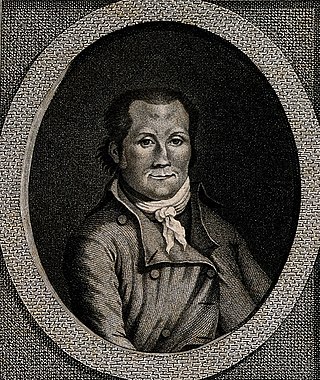
Jean Massieu was a pioneering deaf educator. One of six deaf siblings, he was denied schooling until age thirteen when he met Abbé Sicard, who enrolled him in the Institute national des jeunes sourds de Bordeaux-Gradignan, the Bordeaux School for Deaf Children. There he learned to read and write French, and later helped develop the first formalized French Sign Language. This French Sign Language was later adapted into American Sign Language. He taught at the famous school for the deaf in Paris where Laurent Clerc was one of his students. He began work after a scandal in Paris in Rodez and dedicated his life to educating deaf children. Later he founded a deaf school in Lille, France.

Masato Hagiwara is a Japanese actor, voice actor, narrator and professional mahjong player.
Benjamin James Bahan is a professor of ASL and Deaf Studies at Gallaudet University and a member of the deaf community. He is an influential figure in American Sign Language literature as a storyteller and writer of deaf culture. He is known for the stories "The Ball Story" and "Birds of a Different Feather". He is known for writing the book A Journey into the Deaf-World (1996) with Robert J. Hoffmeister and Harlan Lane. Bahan also co-wrote and co-directed the film Audism Unveiled (2008) with his colleague Dirksen Bauman.
Japanese Equivalent Sign Language or Signed Japanese is a signed language that corresponds to Japanese. With this signed language, you can express Japanese correctly, and this signed language is useful to Japanese learners. Having a richer vocabulary than past signed languages can help increase communicative effectiveness in places of learning, public institutions, and public places. This signed language is not to be confused with Japanese Sign Language or JSL.
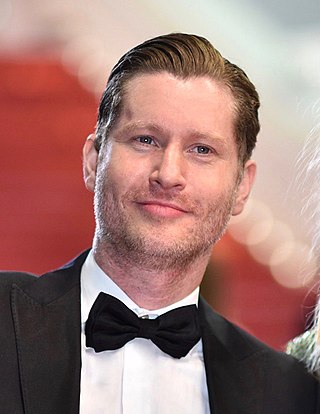
Emilio Insolera is a deaf actor and producer, known for Sign Gene: The First Deaf Superheroes (2017). In 2022, Insolera had a role in Simon Kinberg's The 355.
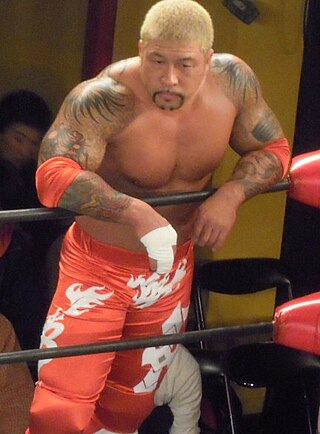
Noboru Kurakawa is a Japanese bodybuilder and professional wrestler better known by his ring name The Bodyguard. He is currently a freelancer, working most notably for All Japan Pro Wrestling (AJPW), where he is a four-time World Tag Team Champion with longtime partner Zeus as "The Big Guns". Kurakawa is also a former two-time Osaka Pro Wrestling Tag Team Champion with Zeus, and a former IWF Heavyweight Champion.

Carola Insolera is a Norwegian born fashion model signed with Women Management Milano.
Humberto Insolera is a deaf Italian politician, academic and advocate for the deaf and people with disabilities.












